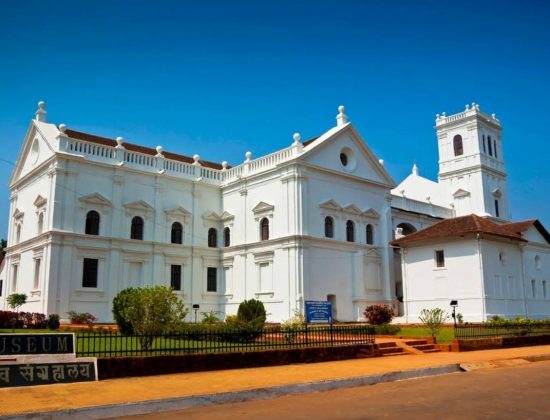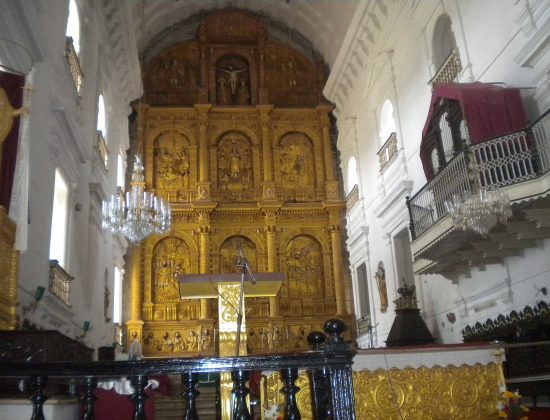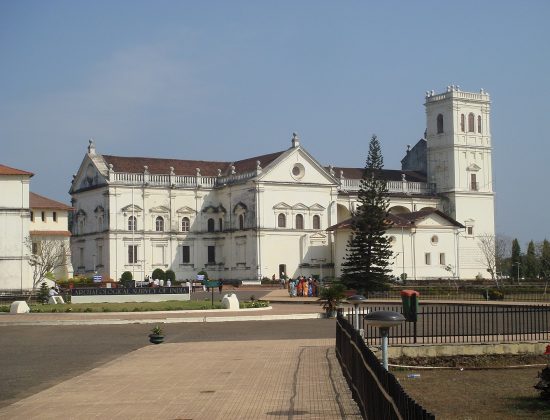Built to commemorate the victory of the Portuguese General Afonso de Albuquerque over the forces of Ismail Adil Shah and his Ottoman allies, Sé Catedral de Santa Catarina or the Cathedral of St Catherine, is a monument to the emergence of Portuguese power in India. It is colloquially referred to as Se Cathedral, Goa and is located opposite the Bom Jesus Basilica which houses the body of St Francis Xavier.
General Albuquerque, who is considered a military genius and probably the greatest naval commander of that age, sailed into Goa on 25 November 1510 with a formidable fleet that overwhelmed the forces ranged against him. This victory was to cement the European domination of the spice trade route to India and the Far East for the next four centuries.
In 1952 the Portuguese Governor of Goa, George Cabral, commissioned the Cathedral as a befitting testament to that naval battle. As the day of the battle coincided with the feast of St Catherine of Alexandria, the Cathedral was named in her honour. St Catherine was the daughter of Constus, the governor of Alexandria in present day Egypt and was martyred at the hands of the Roman emperor Maxentius for having embraced Christianity.
It took about a hundred years for this magnificent edifice to be completed. The main structure of the Se Cathedral, Goa was in place only in 1619. The partially complete Cathedral was consecrated in 1640, but it was not until 1652 that the main altars were completed. The Cathedral is a composite of multiple architectural styles, combining elements of late Gothic, Spanish Plateresque, Mudejar and the Flemish. The cathedral is one of the most important stops in the Pilgrim Stays itinerary of Goa.
It is the most imposing of all churches in Goa and is the seat of the Patriarch of the East Indies who is also the Archbishop of Goa. The Cathedral originally had two towers, but lighting struck one of them down in 1776 and was never rebuilt since. The existing tower serves as a belfry and houses the famous ‘Golden Bell’, renowned for the richness of its peals which is said to have inspired the Portuguese poet Thomas Ribeiro to pen the ‘Sino de Ouro’ or the Golden Bell.
The Se Cathedral, Goa also houses these priceless artefacts:
- The baptismal font used by St. Francis Xavier
- The main altar with its gilded reredos (large altarpiece) depicting scenes from the life of St Catherine of Alexandria as well as her martyrdom.
- The Chapel of the Cross of Miracles, where a vision of the Christ was seen on the plain and unadorned cross in 1919.
- The Chapel of the Blessed Sacrament with its skilfully carved and gilded wall and ceiling.
- The wooden filigree screens separating the chapels from the nave.
- The six additional altars in the transept containing paintings depicting the lives of the saints
- The 18th century organ housed in one of the galleries.
- The statuary and paintings along the walls and in the niches of the pillars, including statues of St Francis Xavier, St Ignatius of Loyola, St Peter, St Paul and St Christopher.





